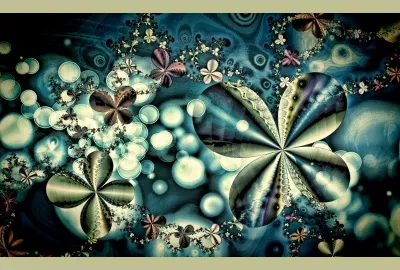古巴(Cuba)
正式名称古巴共和国(Republic of Cuba)
西印度群岛社会主义共和国。位於美国佛罗里达南方145公里,由古巴岛及其周围小岛组成。面积110,861平方公里。人口约11,190,000(2001)。首都:哈瓦那。人口中约3/1为穆拉托人(mulatto,黑人与西班牙人混血的後裔)或黑人,约3/2为白人(大部分是西班牙人後裔)。语言︰西班牙语(官方语)。宗教︰天主教、桑特利亚教(Santeria),两者以前都是被禁止的。货币:古巴披索(peso)、美元。古巴本岛长1,200公里、宽40~200公里,约1/4为山地。图尔基诺峰(Pico Turquino)高1,974公尺,是全国最高峰。其余地区为广阔的平原和盆地。属亚热带气候。其中央计画经济主要依靠蔗糖出口,其次为烟草和镍,所生产的雪茄世界闻名。古巴是西半球第一个共产主义共和国,采一院制,国家元首暨政府首脑为总统。
首批西班牙人到达这里时,古巴只有西沃内人(Ciboney)和阿拉瓦克人等几个印第安人部落。1492年哥伦布宣布该岛为西班牙所有,1511年为西班牙征服,在巴拉科阿(Baracoa)建立第一个永久居民点。此後几个世纪,印第安原住民几近根绝。自18世纪起,由於甘蔗种植的发展,开始自非洲输入大批奴隶,直到1886年才废除奴隶制度。由於西班牙不准古巴在政治上独立,加上日益增长的税收,导致第一次古巴独立战争--十年战争(1868~1878),形成军事僵局。1895年爆发第二次独立战争,1898年美国也卷入其中(参阅Spanish-American War),迫使西班牙终於放弃古巴。此後古巴被美国占领了三年,直到1902年才真正独立。20世纪上半叶,美国大量投资古巴的制糖业,加上观光业和赌博兴起,使古巴的经济走向繁荣。然而,就像政治腐败一样,古巴的经济中也存在着财富分配的不平等。1958~1959年共产主义革命者卡斯楚推翻长期的独裁者巴蒂斯塔,建立一个与苏联结盟的社会主义国家,废除了资本主义,将所有外国企业收归国有。古巴与美国的关系迅速恶化,在1961年美国支持的猪猡湾入侵和1962年的古巴飞弹危机之後,古、美关系降至低点。1980年约125,000名古巴人,包括许多被正式冠上「不受欢迎」标志的人物,被船运至美国。苏联解体後,古巴失去最重要的财政後援,经济大受影响,几乎停滞。至1990年代,由於鼓励发展观光业,经济有所改善;与美国的关系仍不明朗。
English version:
Cuba
Socialist republic, West Indies. Located 90 mi (145 km) south of Florida, it comprises the island of Cuba and surrounding small islands. Area: 42,804 sq mi (110,861 sq km). Population (1997): 11,190,000. Capital: Havana. The population is about one-third mulatto (black-Spanish) or black and about two-thirds white, mostly of Spanish descent. Language: Spanish (official). Religions: Roman Catholicism, Santería (both formerly discouraged). Currency: Cuban peso, U.S. dollar. The main island of Cuba is 746 mi (1,200 km) long and 25-125 mi (40-200 km) wide. About one-quarter is mountainous, with Pico Turquino at 6,476 ft (1,974 m) the highest peak; the remainder is extensive plains and basins. The climate is semitropical. Cuba was the first communist republic in the Western Hemisphere. It has a centrally planned economy that depends on the export of sugar and, to a much lesser extent, tobacco and nickel. Its cigars are considered the world's best. It is a republic with one legislative house, its head of state and government is the president. Several Indian groups, including the Ciboney and the Arawak, inhabited Cuba at the time of the first Spanish contact. Christopher Columbus claimed the island for Spain in 1492, and the Spanish conquest began in 1511, when the settlement of Baracoa was founded. The native Indians were eradicated over the succeeding centuries, and African slaves, from the 18th century until slavery was abolished in 1886, were imported to work the sugar plantations. Cuba revolted unsuccessfully against Spain in the Ten Years' War (1868-78); a second war of independence began in 1895. In 1898 the U.S. entered the war (see Spanish-American War); Spain relinquished its claim to Cuba, which was occupied by the U.S. for three years before gaining its independence in 1902. The U.S. invested heavily in the Cuban sugar industry in the first half of the 20th century, and this, combined with tourism and gambling, caused the economy to prosper. Inequalities in the distribution of wealth persisted, however, as did political corruption. In 1958-59 the communist revolutionary Fidel Castro overthrew its longtime dictator Fulgencio Batista and established a socialist state aligned with the Soviet Union, abolishing capitalism and nationalizing foreign-owned enterprises. Relations with the U.S. deteriorated, reaching a low point with the 1961 Bay of Pigs invasion and the 1962 Cuban missile crisis. In 1980 about 125,000 Cubans, including many officially labeled “undesirables,” were shipped to the U.S. in the so-called Mariel Boat Lift. When communism collapsed in the U.S.S.R., Cuba lost important financial backing and its economy suffered greatly. The latter gradually improved in the 1990s with the encouragement of tourism, though diplomatic relations with the U.S. were not resumed.


















